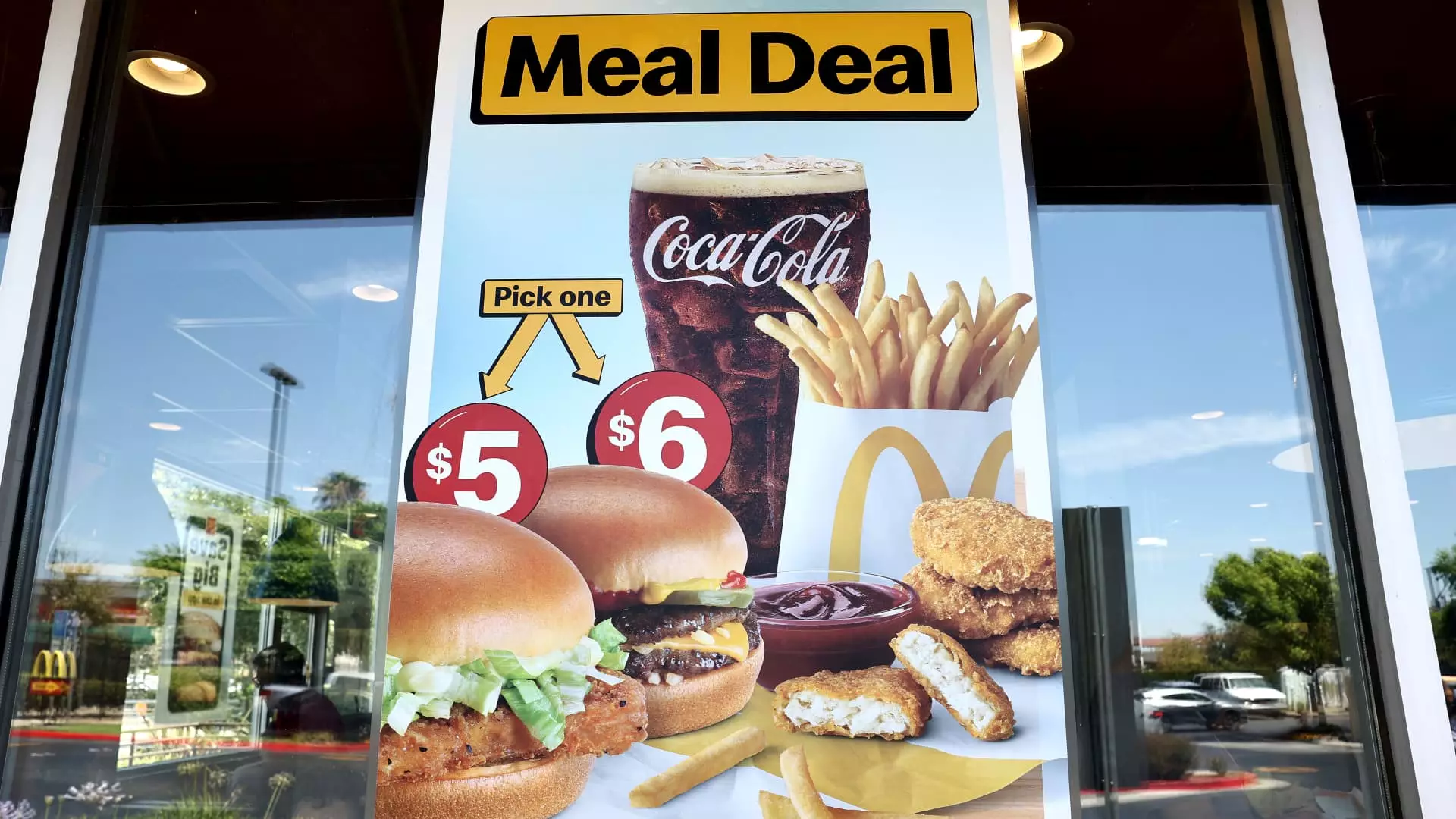In recent years, the fast-food industry has witnessed significant shifts in consumer spending and preferences, particularly in the context of pricing strategies. Once heralded for their affordability, many fast-food chains have seen their budgets tighten as public sentiment regarding value for money has changed. A decade ago, Subway popularized the $5 footlong, a promotion that resonated with cost-conscious customers. However, as economic pressures mount, other chains are trying to revisit this benchmark as they grapple with declining sales.
As various fast-food brands prepare to release their second-quarter earnings, investor sentiments indicate a muted performance across the board, with notable exceptions like Chipotle. Fast food, while historically more resilient during economic downturns, faces a critical crossroads. The cumulative effect of price hikes over recent years has led more than 60% of surveyed consumers to reduce their fast-food expenditures, citing high costs as a primary reason for their change in behavior. This sentiment represents a stark reality check for fast-food chains, which now struggle to maintain their foothold amid rising menu prices and a shifting consumer landscape.
In light of this consumer backlash, major fast-food players like McDonald’s, Taco Bell, Burger King, and Wendy’s have introduced or revived $5 meal deals in an attempt to entice diners back. McDonald’s has reported increased foot traffic following such promotions, yet analysts remain cautious regarding the scale of resulting sales increases. The prevailing narrative suggests that, despite the transient boost these deals might provide, underlying issues such as customer loyalty and sustained profitability are far from resolved.
As pressure mounts, some casual dining establishments have seized the opportunity to attract customers who have grown disenchanted with fast food. By emphasizing value, dining experiences, and quality, chains like Chili’s are courting diners looking for alternatives to traditional fast food options. This shift marks a significant transformation in the competitive dynamic among fast food and casual dining establishments, reflecting a broader trend of consumers gravitating toward perceived better value offerings.
Investor confidence has been shaken as stock prices for major chains such as McDonald’s, Wendy’s, and Restaurant Brands International decline, with many seeing double-digit percentage drops this year. In contrast, the S&P 500 index has risen by 14%, suggesting a stark divergence between broader market trends and the restaurant sector’s challenges. Analysts predict that many chains will underperform against consensus estimates in their upcoming earnings reports, further underscoring investor anxiety.
Such discontent around earnings adds to the narrative that the fast-food sector is failing to adapt to shifting consumer preferences. Historically, value meal promotions were more effective in the first quarter; however, this summer, chains face new pressures to deploy discounts more strategically throughout the year. The warning from analysts is evident: fast-food chains are nearing a tipping point where price hikes can no longer be absorbed without risking profitability and customer retention.
The initial allure of discounted meal deals, such as McDonald’s $5 offerings, reveals deeper concerns regarding their sustainability in the long run. While initial traffic increases are promising, analysts argue that if promotions do not convert consumers into higher-margin spenders—such as upselling drinks or sides—the discounts can quickly erode profit margins and lead to unsustainable pricing models.
This reality presents a unique challenge for fast-food companies as they attempt to balance consumer demand for value with the necessity for profitability. Franchisees, who have grown in stature and influence over the years, express skepticism regarding discounting strategies, as these can directly impact their bottom lines. The formation of the National Owners Association among McDonald’s franchisees exemplifies a growing resistance to top-down pricing strategies perceived to undermine their enterprises.
As brands reevaluate their pricing approaches, the cautionary tale of Subway’s $5 footlong is a potent reminder of the risks associated with excessive discounting. While attracting customers is important, maintaining operational health and profitability is equally critical. Fast-food chains must refine their strategies to ensure that promotions provide not just customer interest but also generate incremental revenue.
In a rapidly evolving landscape, fast food’s urgent need for value-oriented strategies presents opportunities for innovation. By adopting a holistic view that encompasses quality, customer experience, and affordability, chains may better align their offerings with consumer expectations while preserving their profitability. Ultimately, the capacity to adapt to these changing consumer preferences will determine which brands will flourish in the competitive world of fast food—and which will falter.


Leave a Reply